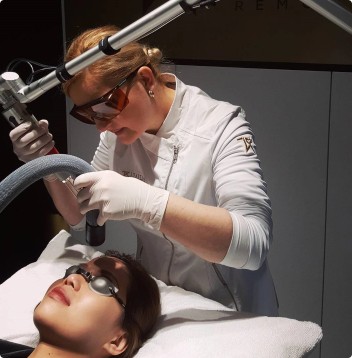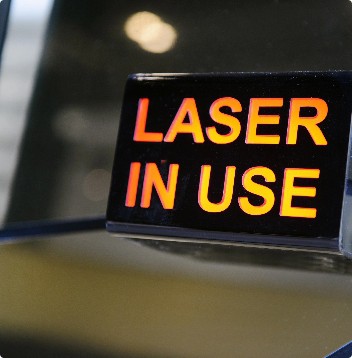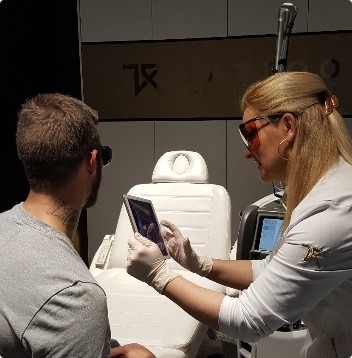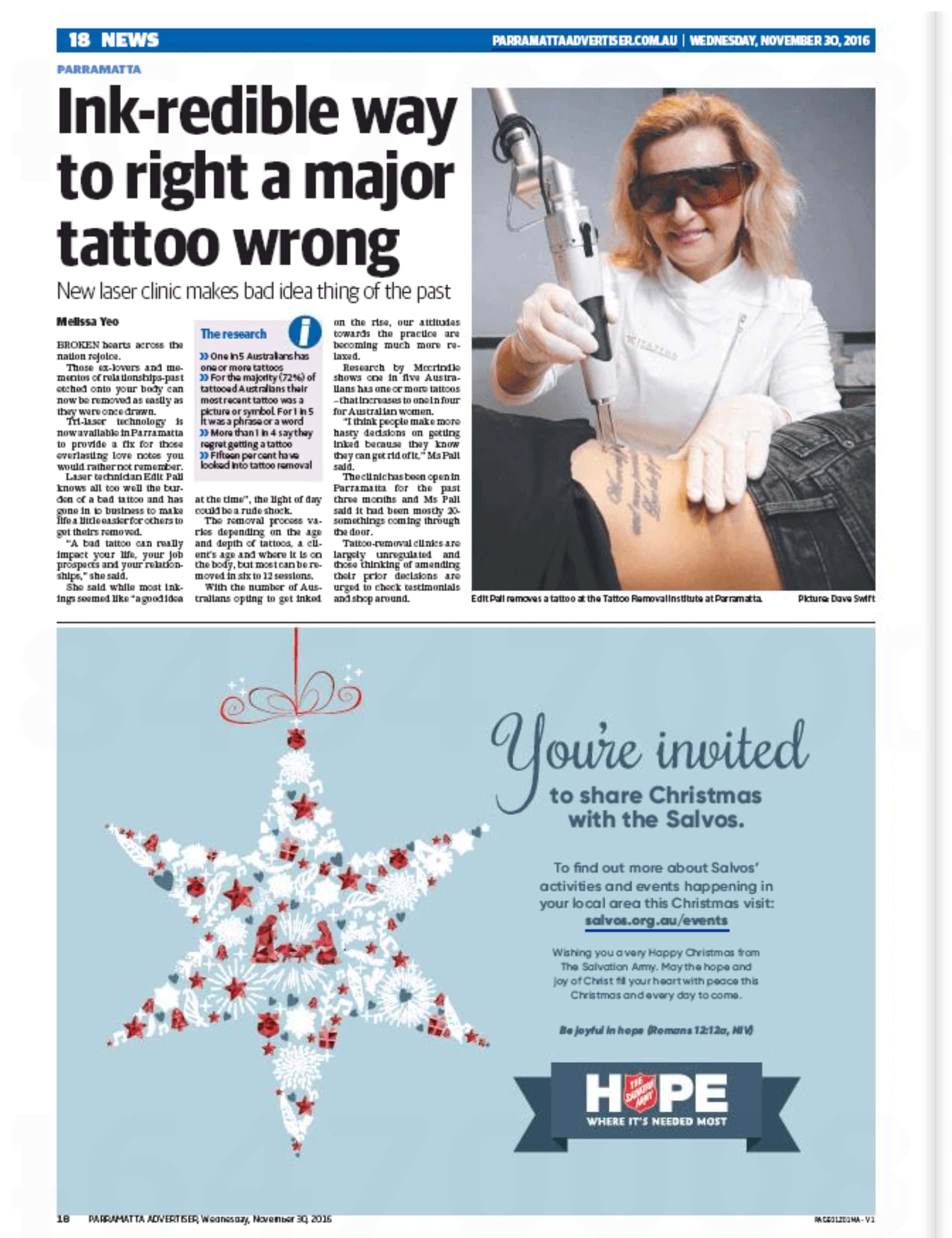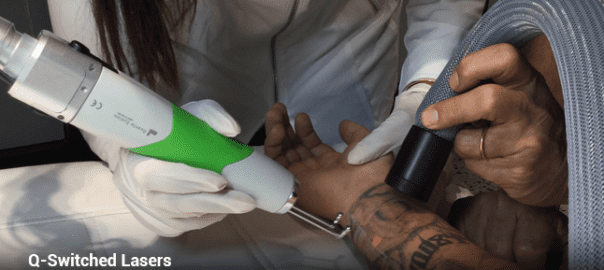While many lasers can remove tattoos, only an elite few can be classified as the best lasers for tattoo removal.
With new studies and updated equipment being released every day, it’s the responsibility of the laser clinic to ensure they offer the most advanced technology available for the removal of unwanted tattoos.
We believe in a combination of the best technology to produce the most optimal results: quick, low-pain laser tattoo removal treatment with a short healing time.
What Are Q Switched Lasers?
Q switched laser technology is probably the most common in the business of tattoo removal.
This is because there are different kinds of Q switched lasers that target different tattoo colours. Multi-coloured tattoos can be treated with these laser systems interchangeably.
This elite tattoo removal treatment technology is so precise that concentrated tattoo colours fragment into smaller particles instantly, meaning that your skin undergoes minimal damage.
Different colour pigments respond well to different laser wavelengths during treatment. Q switch laser technology wavelengths are measured in nanometres (nm) which are one-billionth of a metre. There are three main wavelengths used for laser tattoo removal.
Why is the Tri-Wavelength Laser System Superior?
The Tattoo Removal Institute boasts the world’s only machine that incorporates three different laser wavelengths. This state of the art technology eliminates even the hardest pigments, saves time, and produces superior healing results.
This single Q switch laser includes:
The ND: Yag Laser – 532 NM
This laser’s wavelength of 532nm is best suited for removing brighter tattoo inks like red, orange, pink, yellow and even white.
The Ruby Laser – 694 NM
This laser’s wavelength can treat unusual colours in tattoos, such as bright blue and green. This particular laser leaves the treated area needing minimal care post-treatment and doesn’t result in any scarring. For this reason, it is often chosen for tattoos located on parts of the body that heal the slowest, such as hands and feet.
The ND: Yag Laser – 1064 NM
Unwanted tattoos comprising of dark colours such as blue, purple and black ink respond best to the 1064nm wavelength. It is also the laser of choice for people with darker skin types, as it has the lowest risk of hypopigmentation (when the skin lightens as a result of not producing enough melanin).
Optional Alexandrite Fractional Handpiece – 755 NM
Green is the tattoo ink most challenging to remove. The Alexandrite laser is credited to remove green tattoo pigment better than any other laser.
Tri-Wavelength Q Switch Laser System vs PicoSecond Laser Technology
The other laser system often used in the laser tattoo removal industry is the PicoSure Laser, which uses PicoSecond technology.
Energy density, or fluence, is expressed as joules/cm. Q switched lasers can emit more energy density than PicoSend lasers, making them more powerful laser tattoo removal treatment options.
For example, the Q switch NDYag laser with 532 nm wavelength has the power of 11 J/cm. The PicoSure PicoSecond laser for the same wavelength only has the power of 1.1 J/cm.
It’s less effective to aim short pulses of the right wavelength on the appropriate tattoo colour, if the energy released is too low to shatter and fragment the tattoo ink particles.
What is Optibeam Laser Technology?
Most tattoo removal lasers have a round laser beam shape. We’ve found that the Optibeam’s unique squared flat-top laser beam has a much more even distribution of energy for removing tattoos.
Complete coverage is possible, but most importantly:
- no skin areas are missed, and
- no skin areas are overlapped and hit more than once.
Fractional Treatment
Ablative fractional treatment of the skin during the tattoo removal treatment entails disintegrating the dermal skin through very high temperatures.
Only a fraction of the skin in the area is targetted as fractional tattoo removal technology breaks up the laser’s energy into hundreds of tiny beams that treat one area at a time. The surrounding skin remains untouched.
This reduces side effects such as blistering, meaning the body’s immune system promotes quicker healing and downtime. It also minimises the number of laser treatment sessions needed for complete laser tattoo removal, saving you both time and money.
Why we Choose the Koolio Optimal Air Cooling System
At the Tattoo Removal Institute, we care about the actual laser removal procedure while the patient is in the chair. From the first free consultation, we look at each patient and their individual tattoo removal needs and tailor their personal treatment journey, taking care in every step of the process.
We have chosen the Koolio system for two specific reasons, for the benefit of our clients:
- Reduce Discomfort During the Laser Tattoo Removal Procedure
The Koolio tattoo removal technology is used in conjunction with the Q switch lasers: it blows cool air onto the skin before, during, and after the laser light energy has been applied. The air reaches up to -40℃, and our clients report it to reduce their discomfort by 80%.
- Reduce Risk of Thermal Injury
We care about your laser tattoo removal aftermath. The Koolio system reduces the risk of thermal injury, which leads to painful swelling.
Key Takeaways
Laser tattoo removal is not one-dimensional - it takes a combination of pioneering technology to produce the most effective results.
That being said, at the Tattoo Removal Institute, we don’t only focus on the results. We strive to make the entire tattoo removal process painless, from booking your initial free consultation to knowing how to perform the correct aftercare.
We are proud to offer the most advanced laser tattoo removal method in this field. For the best results from start to finish, and optimal support along the way, let us start you on your journey of complete tattoo removal today.
DISCLAIMER: The information contained herein should NOT be used as a substitute for the advice of an appropriately qualified and licensed physician or other health care provider. The information provided here is for informational purposes only. Please check with a physician if you have health questions or concerns about interactions or go to the TGA for a comprehensive list of TGA warnings. Although we attempt to provide accurate and up-to-date information, no guarantee is made to that effect.

